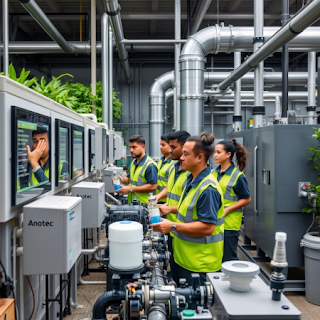Anotec Australia, a foremost innovator in environmental restoration and waste management, has significantly contributed to the enhancement of urban and rural landscapes. Known for their comprehensive solutions, Anotec has made a steadfast commitment to sustainable practices that not only restore the environment but also address the often-overlooked issue of odour control.
Anotec's expertise in odour control is a testament to their holistic approach to environmental challenges. The company has developed state-of-the-art technologies that effectively mitigate offensive odours emanating from waste treatment facilities, landfills, and other sources of environmental nuisance. Their innovative solutions ensure that communities and ecosystems are not only restored but also revitalized with clean air and reduced environmental impacts.
At the heart of Anotec's odour control technologies is an understanding of the complex chemistry of odours. They employ sophisticated systems that trap, treat, and neutralize malodorous gases, transforming them into benign compounds. These systems are designed to integrate seamlessly with existing infrastructure, offering a practical and efficient solution to a pervasive environmental issue.
Anotec's waste management services are complemented by their odour control capabilities, ensuring that waste treatment processes are not only efficient but also pleasant for surrounding communities. Their integrated approach guarantees that the restoration of habitats and the promotion of biodiversity go hand in hand with the elimination of unpleasant smells, creating a harmonious coexistence between human settlements and natural ecosystems.
Their commitment to education and community engagement also spans the realm of odour control. Anotec regularly provides guidance and training to stakeholders, equipping them with the knowledge needed to manage and minimize odour issues. Through workshops and seminars, they offer practical tips and best practices for odour reduction, empowering individuals and organizations to take proactive steps towards cleaner air and healthier environments.
As Anotec continues to innovate and expand their environmental restoration projects, their expertise in odour control further sets them apart. They are actively involved in research and development to create even more efficient and sustainable odour management solutions, ensuring that the air we breathe remains fresh and free of harmful pollutants.
Anotec Australia: Restoring the environment for a sustainable future, and ensuring a fresher, cleaner world with advanced odour control solutions.
Note: For accurate representation, it is advisable to consult directly with Anotec Australia for their specific services, achievements, and approaches to odour control and environmental restoration. This narrative is a professional story created using generic information and reflects the kind of content a company might use to promote its services.



